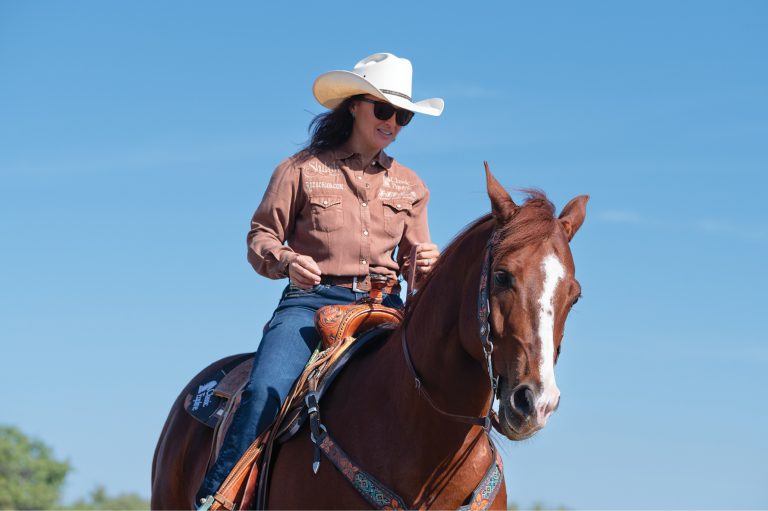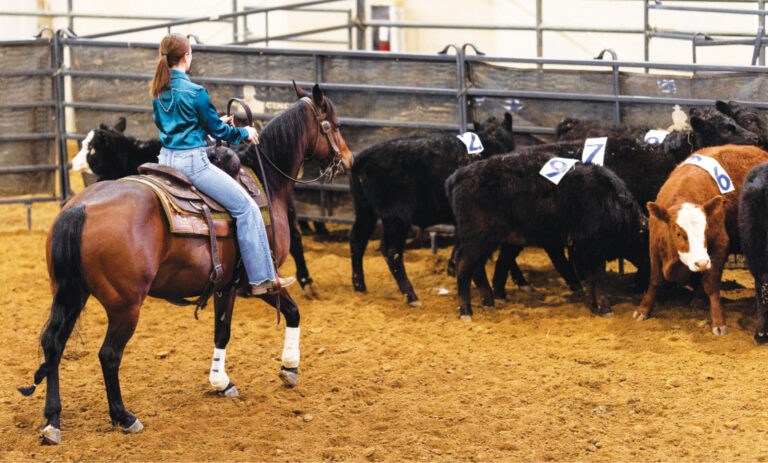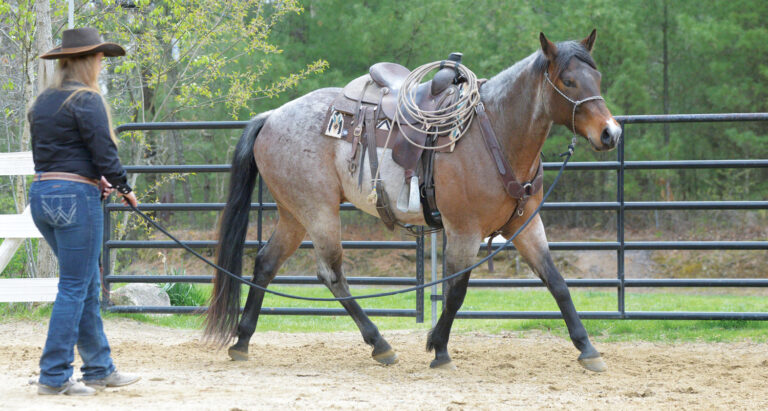Horse training is all about getting your horse to do what you want him to do. You achieve this by providing a foundation, setting your horse up to succeed, then asking him in a way he understands.
If you’re successful, he complies. But when he doesn’t, it’s important to know the difference between his saying “I can’t” or “I don’t want to” and “I won’t and you can’t make me.”
The first, I can’t/don’t want to, is resistance. The second, I won’t and you can’t make me, is defiance. Distinguishing between these two and knowing how to respond to each will make you a better horseman and a more confident, effective rider.
(Note: Anytime your horse’s behavior becomes consistently difficult in any way, always rule out pain, discomfort, or illness first before embarking on a training remedy.)
[RELATED: When your horse is aggressive under saddle.]
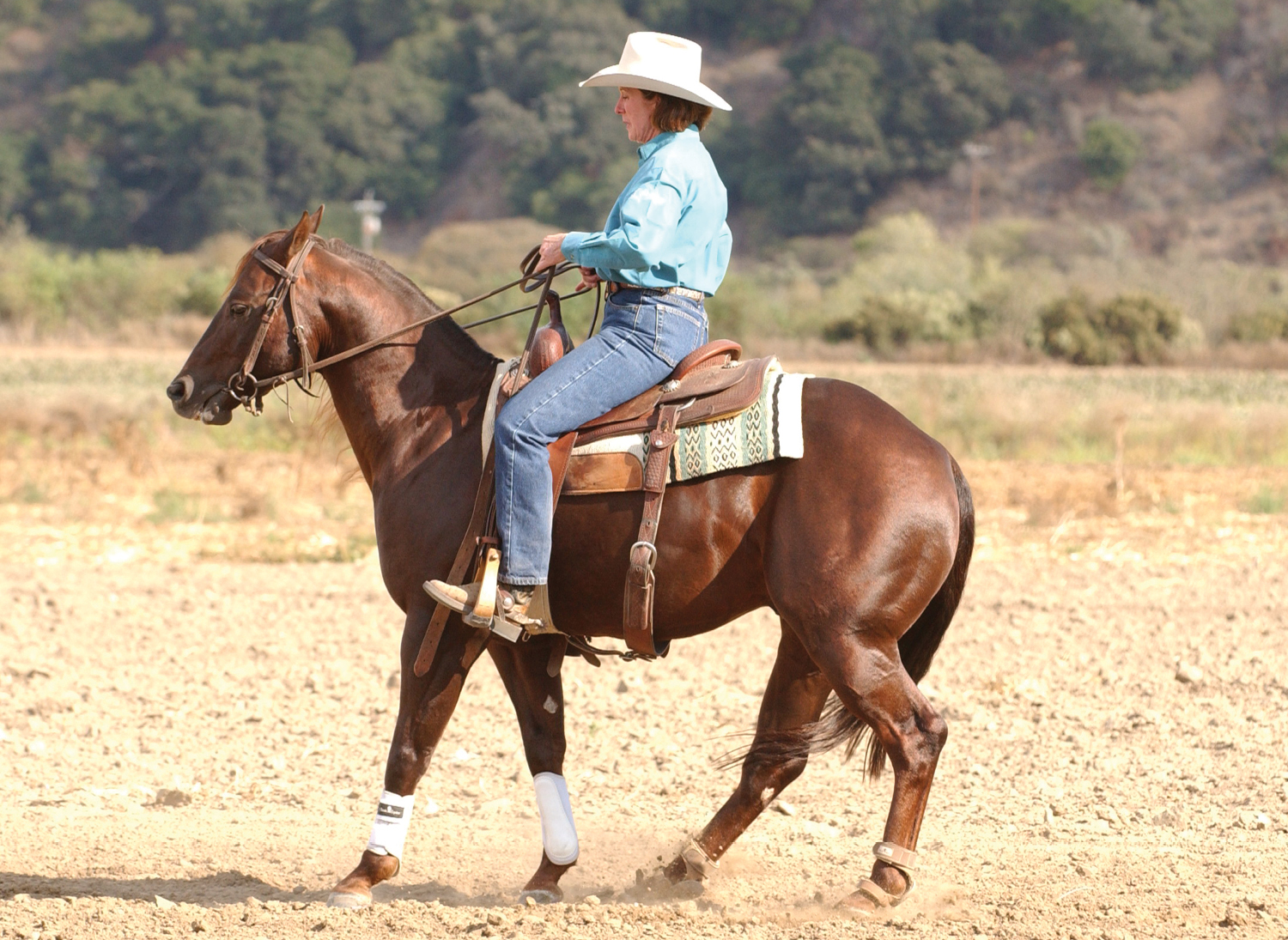
outright to back up, or threatening to rear—those behaviors would indicate defiance.
Caroline Fyffe
Resistance
What it is: Bracing in your horse’s body and/or mind that causes him to avoid doing what you ask. Your horse avoids or resists your cue, rather than refusing it outright.
How it looks/feels: Your horse might lift his head and be stiff in his neck and slow to respond as he resists your cue to, say, go forward or backward, or to move or bend in a particular way.
His ears might be back, but they won’t be pinned flat to his head. He might swish his tail, but it’s not flailing as if there were bees swarming around it.
You may feel uncomfortable with his resistance, but you’re not scared. It doesn’t seem as if your horse may do something rash, such as run into a fence or rear over backwards.
Reining Essentials: How to Excel in Western’s Hottest Sport
Products we feature have been selected by our editorial staff. If you make a purchase using the links included, we may earn a commission. For more information click here.
What causes resistance: There are various causes. Confusion, when he’s not clear on what’s wanted. Fear, when something about what you’re asking is unfamiliar or threatening. Laziness/boredom, often when the training routine has become too predictable. Stiffness, when he hasn’t been adequately suppled and prepared to do the maneuver you’re asking for.
What you should do: Handle resistance differently from how you handle defiance (which I’ll discuss in a moment). Meet resistance with lots of educated riding to soften and supple your horse. Specifically, figure out the cause of his resistance and address it.
If your horse is confused or fearful, stay calm and supportive as you “explain” what you want in a slightly different way. Think of your horse as a child who doesn’t “get” something, or is hesitant about it. You don’t bonk him on the head or scold him. You get down to his level and softly but firmly explain again and again, as need be.
If your horse is lazy or bored, try mixing up your schooling routine. A stubbornly lazy horse may pin his ears and balk, but his bluff can usually be called with a light smack of the rein ends.
Stiffness, of course, is relieved by suppling exercises that work both sides of his body. Try lateral work (such as leg-yielding) and bending exercises (such as counter-bend circles).
[RELATED: How to get a ‘whoa’ you can trust.]
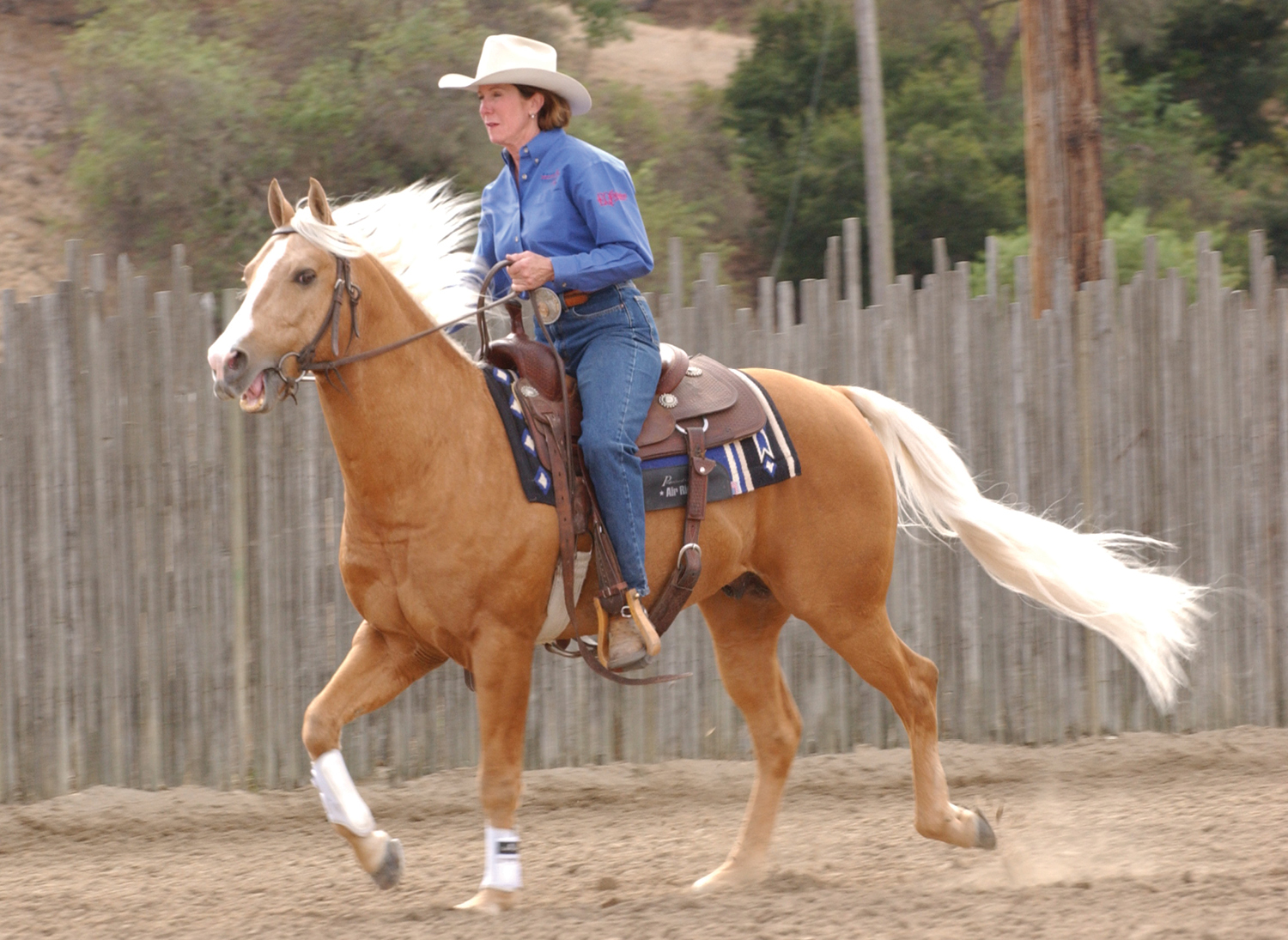
Caroline Fyffe
Defiance
What it is: Your horse willfully challenges your authority by saying flat-out, “No.” Going back to the analogy of a child, after you’ve prepared the child and explained and cajoled and explained again, if you sense that he’s just plainly refusing you by being rude, disrespectful, or bullying, that’s when you know he’s being defiant. Same with your horse.
How it looks/feels: Your horse’s ears may be pinned flat to his head, or he may cock one ear flat to the side. His tail may be thrashing, his muscles tensed.
You may have a palpable feeling that he doesn’t care what happens to him—he’s that set on saying no. He’s being obviously insubordinate, and it makes you feel vulnerable.
What causes defiance: Often it happens when a horse has been allowed to get away with small things and has come to disrespect the rider. Though the rider picks, picks, picks at the horse, ultimately the horse has his way, then moves on to larger disobediences. Horses are rarely “naturally bad”; they become ill-behaved through the mistakes we riders make.
What you should do: Simply backing off because you feel uncomfortable just rewards and reinforces the bad attitude. A simple “redirect” with one rein may be all you need to break his defiance and get him moving and responding again. But sometimes the horse may need a smack on the butt with a rein end (with one rein shortened down first so you don’t wind up in another ZIP code).
Then explain again what you want, only more firmly, but always calmly. Never allow your temper to rise. There’s already one temper flaring; adding to that won’t help.
Your goal is simply to avoid backing down, while getting controlled movement in any direction, even just a circle. Then keep him going until you feel him soften his attitude. Then resume your original lesson.
Caveat: If you become genuinely frightened by your horse’s behavior and feel out of your depth, take him to a professional right away. You don’t want to get hurt, nor do you want to let bad habits become ingrained.

